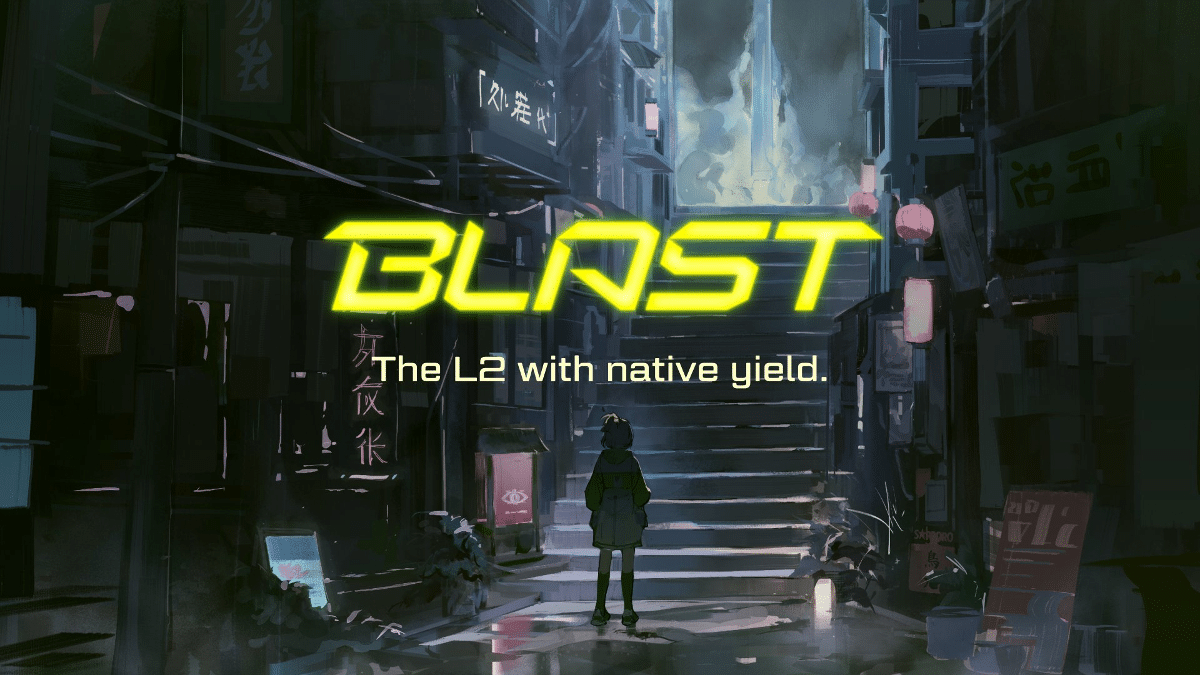Blast, a new Ethereum Layer 2 network, has achieved an impressive Total Value Locked (TVL) of over $230 million within 48 hours of its unveiling. However, there’s a unique twist – the network does not exist yet.
Blast has reached $230 Million in TVL within 48 hours.
37,131 community members are now earning yield (~4% for ETH and 5% for stables) + Blast Points.
We can’t wait to share more about what we’re building for the Blast Community in future updates! pic.twitter.com/DiW2GT7cUe
— Blast (@Blast_L2) November 22, 2023
This noteworthy accomplishment was shared by the protocol in a post on X (formerly Twitter), asserting that a community of 37,131 members has already transferred funds into its network.
According to recent DeBank L2 data, the TVL has surged to over $326 million at press time. This is mainly driven by Blast’s commitment to providing “native yield” on ETH and stablecoin deposits, offering users nearly 4% and 5%, respectively.
Unveiled on November 21, Blast was developed by the co-founder of the popular non-fungible token (NFT) marketplace Blur and is backed by the prominent venture firm Paradigm.
However, its standout feature is its claim to be “the only Ethereum L2 with native yield for ETH and stablecoins.”
Introducing Blast: The only Ethereum L2 with native yield for ETH and stablecoins.
We’ve raised $20m from @Paradigm and @StandardCrypto to build the L2 that helps you earn more.
Details on how to get early access at the end of the thread👇 pic.twitter.com/AYYmK8YFx4
— Blast (@Blast_L2) November 20, 2023
The L2 network achieves this by utilizing Ethereum staking yield, bridging all ETH to LIDO, and using DAI stablecoin to tap MakerDAO’s growing US Treasury bill yield through its Dai Savings Rate (DSR), which is currently at 5%.
In addition to offering native yield, the network explicitly promises an airdrop for early participants, with points earned expected to be redeemable in May 2024.
Blast Timeline
Early Access (now) – bridge to earn yield + Blast Points
Mainnet (Feb 24) – dapps go live, withdrawals enabled
Redemption (May 24) – Blast Points can be redeemed
— Blast (@Blast_L2) November 20, 2023
However, Blast’s surging TVL and the one-way bridge structure have sparked divided opinions, as users cannot withdraw bridged assets and earn the promised “native yields” until the L2 goes live through a mainnet launch in February 2024.
Typically, a bridge enables users to deposit and move tokens from one blockchain to another, enabling interoperability and flexibility within the blockchain ecosystem – but Blast deviates from this norm.
Meanwhile, L2Beat, a research and statistics platform, categorized the project as “upcoming” rather than “active” due to its current bridge structure.
Following the recent rise of @Blast_L2, we’ve decided to add it to our upcoming projects on our website, despite its whopping $87M TVL. We wanted to explain our decision.
To the best of our knowledge, Blast is an upcoming rollup set to launch in Q1 2024 (according to their… pic.twitter.com/8AG2e0gpAU
— L2BEAT 💗 (@l2beat) November 22, 2023
Dankrad Feist, a crypto enthusiast, also criticized the L2 staking structure, which joins ETH and stablecoins, as “a very bad idea.”
This is a very bad idea. ETH and liquid staking derivatives are different assets with different risk profiles (and rewards), and users should have a choice about which one they want to use. The same is true for different types of stablecoins https://t.co/zHYD4QzgLV
— Dankrad Feist (@dankrad) November 21, 2023
Additionally, other critics raised concerns about Blast’s referral campaign, likening it to a Ponzi scheme, which provides points of unknown value as rewards for inviting new users.
Pascal Caversaccio, an independent security researcher, exclusively told DL News media that Blast aims to sell a moonshot project that compromises security and the promised economic incentives.
He noted that the fear of missing out (FOMO) will continue to propel people into another L2 chain through a purported risk-free yield while ignoring so many unknowns.
Is There a Need for More L2 Networks in DeFi Space?
The rapid expansion of Blast, coupled with concerns about its one-way bridge, soaring TVL, and Ponzi-like attributes, has prompted discussions about the necessity of more layer 2 solutions in the crowded decentralized finance (DeFi) space.
According to DeFiLlama, there are 232 blockchains, many of which share utilities and users. Ethereum ranks the largest, with 55.66% of TVL locked due to its extensive ecosystem and L2 projects.
Blast differentiates itself by emphasizing the combination of yield and points, a unique offering compared to other intrinsic-driven L2 projects on the Ethereum network.
Despite its delayed activation, investors continue to bridge funds to the platform to accrue interest. This may suggest the platform is squarely focused on DeFi investors who frequently dabble in high-risk crypto ventures for significant rewards.
While controversies continue to loom over Blast’s announcement and overall structure, an expected mainnet launch will provide deeper insights into efficiency and trust.
Read the full article here





